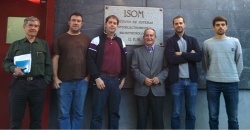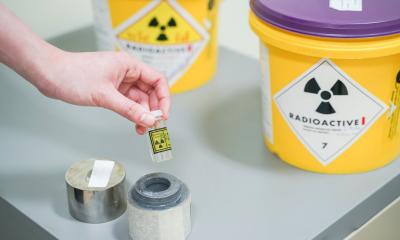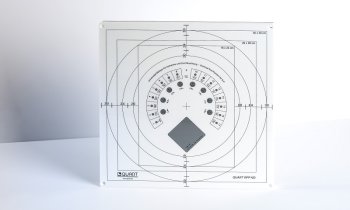Terahertz detection and emission
UPM participates in the ZOTERAC project, whose technology could replace the conventional X-ray sources in medicine or improve the detection of weapons and explosives.

The ZOTERAC research project aims at establishing a new era for the emission and detection of terahertz (THz) radiation. The technology that will be developed may replace the conventional X-ray sources in medicine or improve the detection of weapons and explosives, among many applications. Adrian Hierro, from the Instituto de Sistemas Optoelectrónicos y Microtecnología (ISOM), leads the Universidad Politécnica de Madrid (UPM) participation in this project, which gathers five institutions from four European countries.
ZOTERAC stands for Zinc Oxide ForTeraHertz Cascade Devices, and its aim is the development of ZnO-based nanoengineered semiconductors in order to realize THz emitters operating at room-temperature with mW output power capability, as well as THz quantum detectors with higher operating temperatures than current GaAs technology. These devices are based on the quantum cascade concept and take advantage of the uniqueproperties of ZnOfor achieving high-temperature operation.
In the THz spectral region, located between the infrared and the microwave regions of the electromagnetic spectrum many materials and living tissues are semi-transparent, and can be imaged, identified, and analyzed. This paves the way for these non-ionizing radiations to find novel applications in the medical field where they could replace the conventional X-ray sources for radiology, effective detection of epithelial cancer, or improved imaging in dentistry.
Also, the capability to detect weapons and explosives even when they are concealed by paper, plastic, wood or concrete makes the THz domain one of the most exciting ranges of the electromagnetic spectrum.THz radiation also finds appealing applications in astrophysics, biology, foodinspection, process control, or drug detection, since plenty of molecules exhibit absorption signatures in the THz range.
However, the THz range is frequently known as “the THz gap” because of the lack of compact semiconductor devices operating in this frequency region. A prerequisite for public-domain applications to emerge in the strategic THz frequency range is the availability of compact size semiconductor sources operating at room temperature, which is out of range for the current technology based on GaAs.
Based on the quantum cascade concept reported in the early 1970s, the Quantum Cascade Laser (QCL) and theQuantum Cascade Detector (QCD) are the most promising candidates to become the efficient THz devices of tomorrow.ZOTERAC aims at the development of such devices, by not just proposing marginal improvements of the quantum cascade device performance but developing a radically new and disruptive approach based on a novel material family: the ZnO family.
ZOTERAC, which was launched on the 1st of September 2015,is funded by the EU through its Horizon 2020 program and has a budget of 3.8M€. The project consortium is made up by five leading institutions in their respective fields: Centre National de la Recherche Scientifique - Centre de Recherche sur l'Hétéro-Epitaxie et ses Applications (CNRS-CRHEA, project coordinator), Université Paris Sud – Institut d'Électronique Fondamentale (UPS-IEF), Universidad Politécnica de Madrid (UPM),Technische Universität Wien (TUW), and Eidgenoessische Technische Hochschule Zürich (ETH).
Source: Universidad Politécnica de Madrid
01.12.2015











